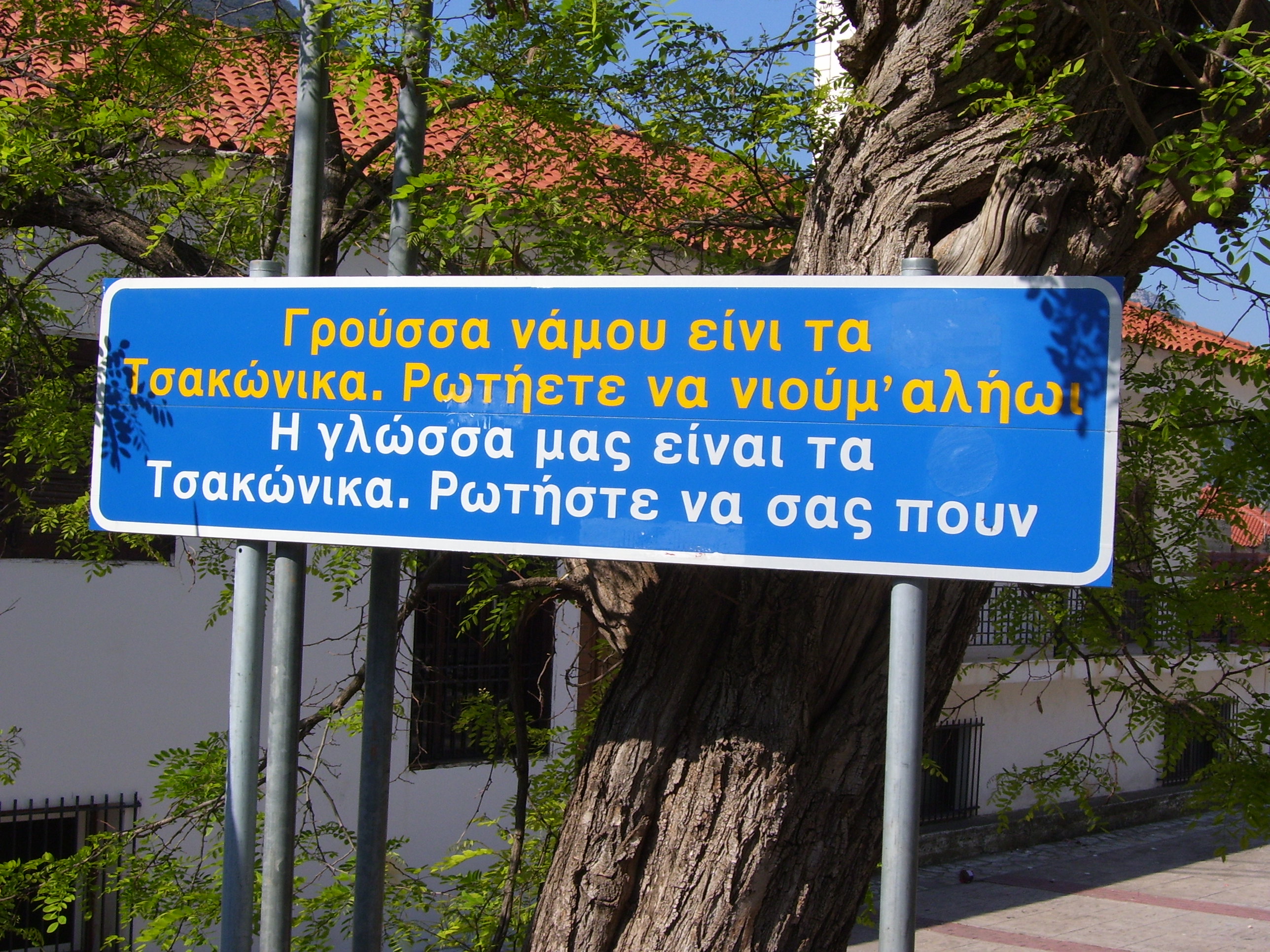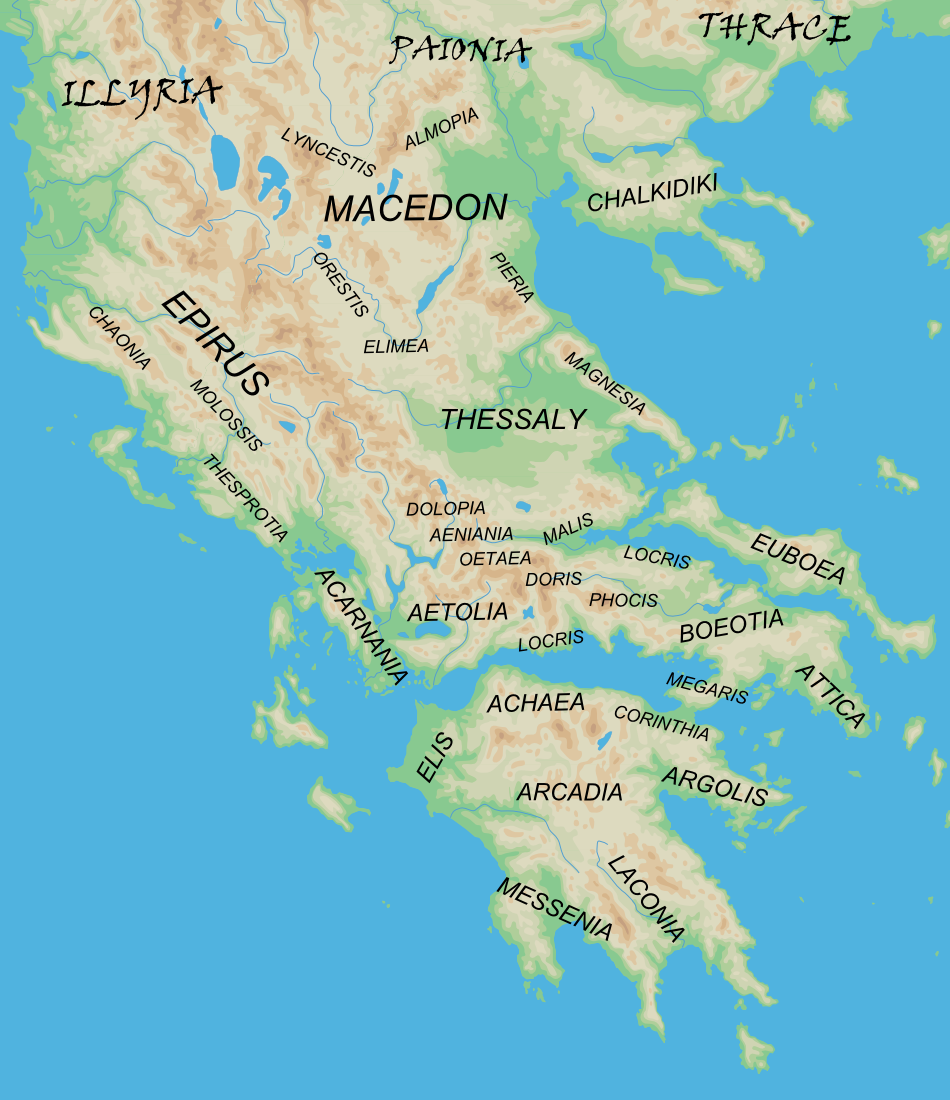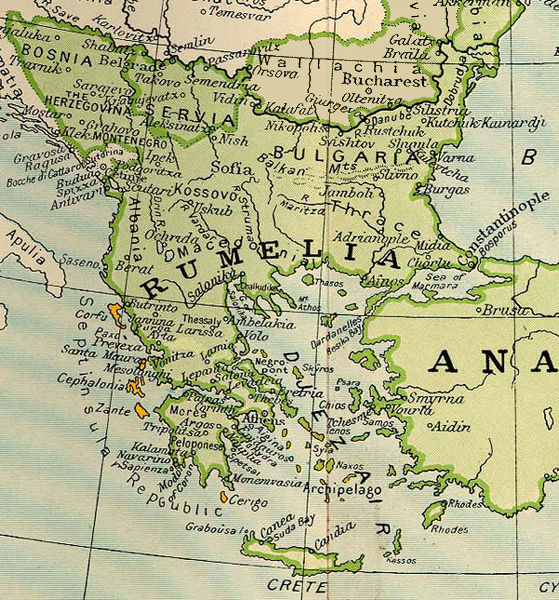|
Prastos
Prastos (, Tsakonian: Πραστέ) is a settlement in Arcadia, Greece. Formerly, Prastos was the premier town of the Tsakonian region, but declined in importance after its devastation by Ibrahim Pasha of Egypt during the Greek War of Independence and a general economic migration to urban areas that occurred in the following decades. It is considered a traditional settlement. History During the Ottoman period, Prastos was the leading city of Tsakonia, and one of the richest in the Peloponnese. The inhabitants had special trading rights granted by the Sublime Porte, which contributed to the town's economic success. It was the seat of a bishopric, that of "Rheoi and Prastos." During the Greek War of Independence, the town was sacked by Ibrahim Pasha of Egypt and its olive groves burned, making the settlement unsuitable for habitation for decades hence. Much of the surviving population fled to Leonidio and the Argolid and could not be persuaded to return to the relatively less ... [...More Info...] [...Related Items...] OR: [Wikipedia] [Google] [Baidu] |
Tsakonian Language
Tsakonian or Tsaconian (also Tzakonian or Tsakonic, and Tsakonian: , ) is a highly divergent modern variety of Greek, spoken in the Tsakonian region of the Peloponnese, Greece Greece, officially the Hellenic Republic, is a country in Southeast Europe. Located on the southern tip of the Balkan peninsula, it shares land borders with Albania to the northwest, North Macedonia and Bulgaria to the north, and Turkey to th .... Unlike all other extant varieties of Greek, Tsakonian derives from Doric Greek rather than from the Attic Greek, Attic–Ionic Greek, Ionic branch. Although it is conventionally treated as a dialect of Greek, some compendia treat it as a separate language. Tsakonian is Critically endangered language, critically endangered, with only a few hundred or a few thousand, mostly elderly, fluent speakers left. Although Tsakonian and standard Modern Greek are related, they are not mutually intelligible. Etymology The term Tsakonas or Tzakonas first emerges in the ... [...More Info...] [...Related Items...] OR: [Wikipedia] [Google] [Baidu] |
North Kynouria
North Kynouria or Vóreia Kynouría () is a municipality in Arcadia, Greece. It is located in the eastern part of the regional unit, between the northwestern shores of the Argolic Gulf and northern Laconia. Its land area is 576.981 km². Its population is 9,483 (2021 census). The seat of the municipality is in Astros. Its largest other towns or villages are Ágios Andréas (pop. 1,065), Paralio Astros (1,043), Doliana (846), Ágios Pétros (717), Meligoú (684), Korakovoúni (659), Prastós (336) and Kastrí (335). Subdivisions The municipality is divided into 26 communities: * Agia Sofia * Agios Andreas (Agios Andreas, Arkadiko Chorio, Paralia Agiou Andreou) * Agios Georgios (Aetochori, Vathia, Melissi) * Agios Petros (Agios Petros, Moni Malevis, Xirokampi) * Astros (Astros, Agios Ioannis, Agios Stefanos, Varvogli, Iera Moni Loukous, Chantakia) *Charadros (Charadros, Agioi Asomatoi) * Doliana (Ano Doliana, Dragouni, Kato Doliana, Kouvlis, Prosilia, Rouneika) * Elatos *K ... [...More Info...] [...Related Items...] OR: [Wikipedia] [Google] [Baidu] |
Tsakonia
Tsakonia (, ''Tsakoniá''; Tsakonian language, Tsakonian: Τσακωνία, ''Tsakonía'') or the Tsakonian region () refers to the small area in the eastern Peloponnese where the Tsakonian language is spoken, in the area surrounding 13 towns, villages and hamlets located around Pera Melana in Arcadia. It is not a formally defined political entity of the modern Greece, Greek state. Extent In his ''Brief Grammar of the Tsakonian Dialect'' published in 1951, Prof. Thanasis Costakis defines Tsakonia as the area from the town of Agios Andreas in Kynouria south to Leonidio and Tyros, Greece, Tyros and inland as far as Kastanitsa and Sitaina, but asserts that in former times the Tsakonian-speaking area extended as far as Cape Malea in eastern Laconia. The principal town in Tsakonia at this time was Prastos, which benefited from a special trading privilege granted by the authorities in Constantinople. Prastos was burned by Ibrahim Pasha of Egypt, Ibrahim Pasha in the Greek War of Independ ... [...More Info...] [...Related Items...] OR: [Wikipedia] [Google] [Baidu] |
List Of Settlements In Arcadia
This is a list of settlements in Arcadia, Greece. * Aetorrachi * Agia Sofia * Agia Varvara * Agiorgitika * Agios Andreas * Agios Georgios * Agios Ioannis * Agios Konstantinos * Agios Petros * Agios Vasileios, Leonidio * Agios Vasileios, Tripoli * Agriakona * Agridi * Akovos * Alea * Alepochori * Alonistaina * Ampelaki * Anavryto * Anemodouri * Ano Doliana * Ano Karyes * Anthochori * Arachamites * Arachova * Artemisio * Asea * Astros * Athinaio * Atsicholos * Charadros * Chirades * Chora * Choremis * Chotoussa * Chranoi * Chrysochori * Chrysovitsi * Dafni * Dara * Dimitra * Dimitsana * Dorizas * Doxa * Drakovouni * Dyrrachio * Elaiochori * Elati * Elatos * Elliniko * Ellinitsa * Episkopi * Evandro * Falaisia * Garea * Gefyra * Giannaioi * Graikos * Isaris * Isoma Karyon * Kakouraiika * Kalliani * Kaltezes * Kamara * Kamari * Kamenitsa * Kandalos * Kandila * Kapsas * Tou Karatoula * Karatoulas * Kardaras * Kardarits ... [...More Info...] [...Related Items...] OR: [Wikipedia] [Google] [Baidu] |
List Of Traditional Settlements Of Greece
Traditional settlements in Greece are considered those settlements that have retained their unchanged image of the past, as well as their local character. Around 830 traditional settlements have been designated under the responsibility of the Ministry for the Environment, Physical Planning and Public Works, while the Deputy Minister for Macedonia and Thrace and the Ministry for the Aegean also have the authority to declare traditional settlements. The following is a list of traditional settlements in Greece categorised by regional units: Achaea * Alepochori * Patras (some parts of the city) * Vesini Aetolia-Acarnania *Nafpaktos Andros Arcadia Argolis * Argos (part of the city) * Ermioni (Mandrakia beach, Bisti) * Karia *Nafplio Boeotia * Arachova Central Macedonia * Thessaloniki (parts of city) * Sykies Corfu Drama * Perithorio * Pagoneri Grevena * Diporo * Kalloni, Grevena Evros * Metaxades * Paliouri * Samothrace Euboea * Agios Ioa ... [...More Info...] [...Related Items...] OR: [Wikipedia] [Google] [Baidu] |
Peloponnese (region)
The Peloponnese Region (, ) is a region in southern Greece. It borders Western Greece to the north and Attica to the north-east. The region has an area of about . It covers most of the Peloponnese peninsula, except for the northwestern subregions of Achaea and Elis which belong to Western Greece and a small portion of the Argolid peninsula that is part of Attica. Administration The Peloponnese Region was established in the 1987 administrative reform. With the 2011 Kallikratis plan, its powers and authority were redefined and extended. Along with the Western Greece and Ionian Islands regions, it is supervised by the Decentralized Administration of Peloponnese, Western Greece and the Ionian Islands based at Patras. The region is based at Tripoli and is divided into five regional units (pre-Kallikratis prefectures), * Arcadia, * Argolis, * Corinthia, * Laconia and * Messenia, which are further subdivided into 26 municipalities. The largest city of the ... [...More Info...] [...Related Items...] OR: [Wikipedia] [Google] [Baidu] |
Episcopal See
An episcopal see is the area of a bishop's ecclesiastical jurisdiction. Phrases concerning actions occurring within or outside an episcopal see are indicative of the geographical significance of the term, making it synonymous with ''diocese''. The word ''see'' is derived from Latin , which in its original or proper sense denotes the seat or chair that, in the case of a bishop, is the earliest symbol of the bishop's authority. This symbolic chair is also known as the bishop's . The church in which it is placed is for that reason called the bishop's cathedral, from Latin , meaning the 'church of the '. The word ''throne'' is also used, especially in the Eastern Orthodox Church, both for the chair and for the area of ecclesiastical jurisdiction. The term ''see'' is also used of the town where the cathedral or the bishop's residence is located. Catholic Church Within Catholicism, each diocese is considered to be a see unto itself with a certain allegiance to the See of Rome. ... [...More Info...] [...Related Items...] OR: [Wikipedia] [Google] [Baidu] |
Argolid
The regions of ancient Greece were sub-divisions of the Hellenic world as conceived by the ancient Greeks, shown by their presence in the works of ancient historians and geographers or in surviving legends and myths. Conceptually, there is no clear theme to the structure of these regions. Some, particularly in the Peloponnese, can be seen primarily as distinct geo-physical units, defined by physical boundaries such as mountain ranges and rivers. Conversely, the division of central Greece between Boeotia, Phocis, Doris and the three parts of Locris, seems to be attributable to ancient tribal divisions and not major geographical features. Both types of regions retained their identity throughout the Greek Dark Ages and its tumultuous changes in the local population and culture, giving them a less political and more symbolic presence. Other geographical divisions not identified with the aforementioned areas did, however, change over time, suggesting a closer connection with tribal ... [...More Info...] [...Related Items...] OR: [Wikipedia] [Google] [Baidu] |
Leonidio
Leonidio (, Katharevousa: Λεωνίδιον, Tsakonian: Αγιελήδι) is a town and a former municipality in Arcadia, Peloponnese, Greece. Since the 2011 local government reform it is part of the municipality South Kynouria, of which it is a municipal unit. The municipal unit has an area of 418.65 km2, the community 102.67 km2. It is considered a traditional settlement. Name In the local Tsakonian language, the only surviving descendant of Doric Greek, the town is called ''Agie Lidi''.*. Page 19. Landscape The town of Leonidio, with a population of 3,826, emerges from a spectacular landscape, bound by two abrupt mountainsides enclosing the town from the north and south. The River Dafnon passes through the town, and its banks are linked with three bridges. The town is capital of the Tsakonia region, notable for its cultural and linguistic particularities, and the settlement itself offers striking and picturesque architecture; now a protected architectural sit ... [...More Info...] [...Related Items...] OR: [Wikipedia] [Google] [Baidu] |
Thanasis Costakis
Thanasis Costakis (, 1907–2009) was a Greek linguist and lexicographer best known for his work on the critically endangered Tsakonian language spoken in the eastern Peloponnese. Costakis was born in Pera Melana in Arcadia, a Tsakonian-speaking village. Costakis taught at several gymnasia and lycea in Athens before affiliating with the Academy of Athens, where he contributed to the composition of the Historical Lexicon of Modern Greek. In addition to his linguistic works, he also published a volume on the traditional architecture of Tsakonia. Costakis also developed a writing system for the Tsakonian language, which included orthography using dots, ''spiritus asper'', and caron A caron or háček ( ), is a diacritic mark () placed over certain letters in the orthography of some languages, to indicate a change of the related letter's pronunciation. Typographers tend to use the term ''caron'', while linguists prefer ... for use in his works, which has been used in hi ... [...More Info...] [...Related Items...] OR: [Wikipedia] [Google] [Baidu] |
Ottoman Greece
The vast majority of the territory of present-day Greece was at some point incorporated within the Ottoman Empire. The period of Ottoman rule in Greece, lasting from the mid-15th century until the successful Greek War of Independence broke out in 1821 and the First Hellenic Republic was proclaimed in 1822, is known in Greece as Turkocracy (). Some regions, like the Ionian islands and various temporary Republic of Venice, Venetian possessions of the Stato da Mar, were not incorporated in the Ottoman Empire. The Mani Peninsula in the Peloponnese was not fully integrated into the Ottoman Empire, but was under Ottoman suzerainty. The Eastern Roman Empire, which ruled most of the Greek-speaking world for over 1100 years, had been fatally weakened since the Fourth Crusade of 1204. Having defeated the Serbs, the Ottomans fall of Constantinople, captured Constantinople in 1453 and soon advanced southwards capturing Athens in 1456 and the Peloponnese in 1460. By the early 16th century, a ... [...More Info...] [...Related Items...] OR: [Wikipedia] [Google] [Baidu] |
Sublime Porte
The Sublime Porte, also known as the Ottoman Porte or High Porte ( or ''Babıali''; ), was a synecdoche or metaphor used to refer collectively to the central government of the Ottoman Empire in Istanbul. It is particularly referred to the building which housed the office of the Grand Vizier, Ministry of Foreign Affairs, Ministry of the Interior, and the Supreme Council of Judicial Ordinances. Today it houses the office of the Istanbul governerate. History The name has its origins in the old practice in which the ruler announced his official decisions and judgements at the gate of his palace. This was the practice in the Byzantine Empire and it was also adopted by Ottoman Turk sultans since Orhan I. The palace of the sultan, or the gate leading to it, therefore became known as the "High Gate". This name referred first to a palace in Bursa, Turkey. After the Ottomans had conquered Constantinople, now Istanbul, the gate now known as the Imperial Gate (), leading to the outerm ... [...More Info...] [...Related Items...] OR: [Wikipedia] [Google] [Baidu] |




